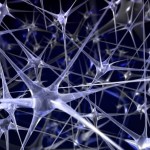Researchers at UT Southwestern Medical Center have discovered in mice that the brain must create new nerve cells for either exercise or antidepressants to reduce depression-like behavior.
In addition, the researchers found that antidepressants and exercise use the same biochemical pathway to exert their effects.
These results might help explain some unknown mechanisms of antidepressants and provide a new direction for developing drugs to treat depression, said Dr. Luis Parada, chairman of developmental biology and senior author of a study in the Aug. 14 issue of the journal Neuron.
In animals, it was already known that long-term treatment with antidepressants causes new nerve cells to be generated in a part of the brain called the dentate gyrus. Exercise, which can also relieve the symptoms of depression, stimulates the generation of new nerve cells in the same area.
“We would never claim that what we study in mice directly relates to how antidepressants work in humans, but there are interesting features in parallel,” Dr. Parada said. “The study unifies different observations that point to the brain’s dentate gyrus region and to creation of nerve cells as being important in depression.”
Antidepressants act very quickly to increase levels of natural compounds, called neurotransmitters, which nerve cells use to communicate. It takes several weeks to several months, however, for the patients who respond to such treatments to feel less depressed. Dr. Parada said this implies that some other long-term mechanism is also at work.
The current study was designed to test several phenomena that have long been observed in animal studies but have not been studied together to see if they are linked, Dr. Parada said.
The researchers focused on a molecule called TrkB, or Track-B, which is found on the surface of nerve cells and responds to several growth factors to cause new nerves to grow in the dentate gyrus.
They genetically engineered mice to lack TrkB specifically in the stem cells that give rise to new neurons, then gave them antidepressants for several weeks or allowed them to run on wheels. When the mice were tested for depressive behavior, the tests revealed that neither the antidepressants nor the exercise had helped them, and the animals also had not grown new nerve cells in the dentate gyrus.
“At least in mice, this result directly links antidepressants and voluntary exercise with TrkB-mediated creation of nerve cells,” Dr. Parada said.
The results also showed that antidepressants required TrkB to stimulate the growth of new nerve cells.
Matching the timeframe for medicated patients to feel less depressed, it takes several weeks for new nerve cells to grow, Dr. Parada said. This parallel effect, he said, may mean that antidepressants need to stimulate growth of new cells in the dentate gyrus in order to achieve their full effect.
“We can get biochemical, physiological, behavioral and anatomical results in animal models,” Dr. Parada said. “These all resonate with the human condition, so perhaps you have a physiological relevancy.
“There could be a way to stimulate growth of nerve cells to fight depression, for example.”
Other UT Southwestern researchers involved in the study were lead author Yun Li, graduate student in developmental biology; Bryan Luikart, former graduate student in developmental biology; Dr. Shari Birnbaum, assistant professor of psychiatry; Jian Chen, student research assistant in developmental biology; Dr. Chang-Hyuk Kwon, instructor of developmental biology; Dr. Steven Kernie, associate professor of pediatrics; and Dr. Rhonda Bassel-Duby, associate professor of molecular biology.
The work was supported by the National Institute of Neurological Disorders and Stroke.
Source: UT Southwestern Medical Center via Newswise

